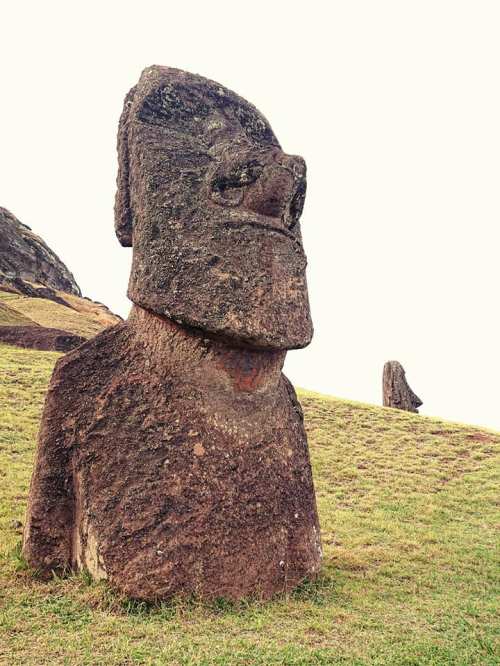
I have been fortunate enough to travel around the world. Nowhere was as uniquely beautiful as Easter Island, also known as Rapa Nui.
The tiny spec on the world map was finally discovered by the Dutch in 1722.
Named after the day of its discovery, the island may have been spotted as early as 1686, by Captain Davis, an English explorer.
Originally named “Davis” island, this was the land mass the Dutch were seeking. It was later visited briefly by James Cook in 1744. He soon continued on his way, declaring that the island had nothing substantial to offer. He noted that there weren’t any trees or animals and few birds. You can read the fascinating diary of the experience here.

The indigenous people would have looked something like this.
Some twenty years before, the Dutch had killed 12 islanders for coming too close. Perhaps when Cook visited, the natives thought that appeasing these powerful people would enable survival, so they hoisted a bunch of bananas up to the boat as a peace offering.

Those courageous seafarers must have been glad to arrive – Easter Island is one of the most remote locations in the world. Accessible from just Tahiti or Chile, it is a five hour flight. The tiny airport usually operates one flight each day. If you want to go the old-fashioned way, a journey by boat takes a week and only two operate annually.
We flew business class because it was the same price as standard and it was a pleasant experience, with fully extendable seats. Our flight was as cheap as it gets at £400 return, as we went out of season in June when it is cooler and wetter. However, it was still warm, with temperatures between 18-20 degrees celcius. We were lucky enough not to get rain during the day.

Winter is the best season to visit, as there were only a few small groups of tourists at key sites and it did not seem to get hot enough for there to be any mosquitoes.
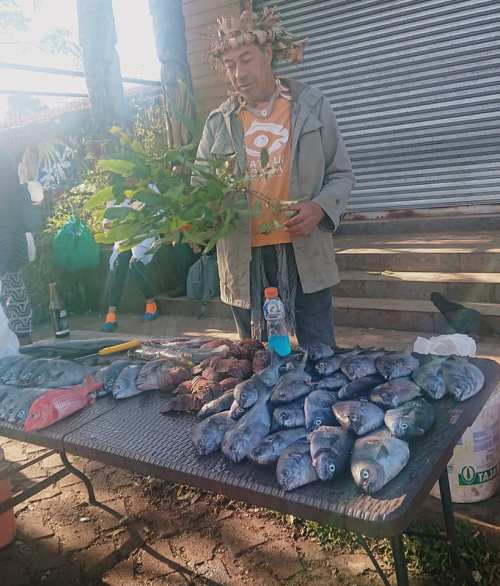
The fish was lovely and fresh, with a choice of large tuna, reinata and merluza to name a few, along with squid, prawns and other crustaceans.
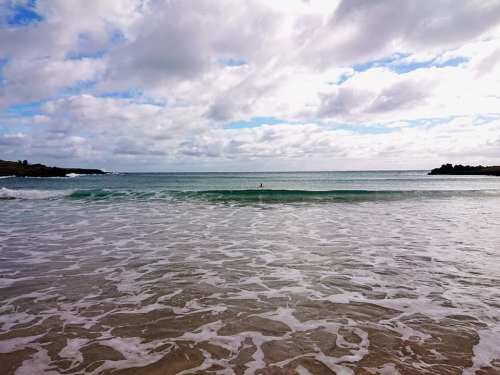
On the last day we swam in the sea, which was luke warm and very pleasant. The island only has one sandy beach and you can admire a row of “moai” statues as you swim. This area of the Pacific must be one of the least polluted in the world, owing to its isolation.
The best way to see the statues is to cycle. This means you can go at your own pace and avoid any pesky tour buses. Most of the sites close at 4pm. We hired electric bikes from a great shop off the main street for about 17 000 pesos, £20 a day. Don’t bother with the bike shops on the main street, most of them are broken and you get ripped off.
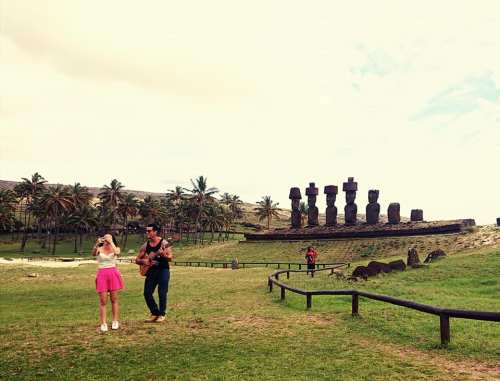
All photos on this page copyright literarylydi
It was this isolation that caused at least three near extinctions of its indigenous population. The Polynesians are believed to have arrived in 700-800 A.D and settled there permanently 100-200 years later. They are believed to have travelled thousands of miles, from the Marquesa Islands.
Those ancient voyagers looked for islands after studying the migration patterns and habits of birds and then navigated using the position of stars. With their large double-hulled wooden canoes, they travelled with basic foodstuffs to help them farm the new land. From 1000-1100 A.D. they also brought sweet potato, perhaps from contact with South America.

Copyright literarylydi
Its Polynesian name is Rapa Nui. From the 1400s, the island was so successfully cultivated and well-populated that the tribes started building the famous megaliths with smooth expressionless faces. To this day, no one knows what they symbolise. They have a dramatic and haunting beauty. They tower above you, silently watching over the farmed fields, undulating hills and red rocky cliffs. Built from around 1400 until 1650, they have watched generation after generation flourish and fail.
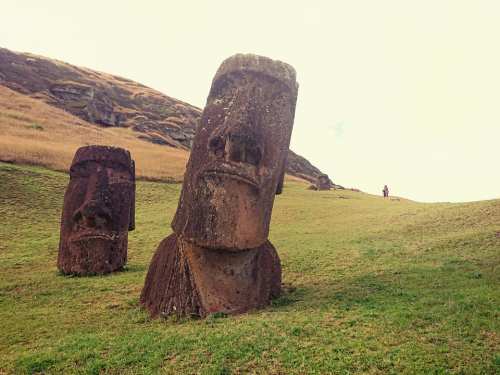
Archaeologists found that the islanders all worked together to build and enlarge them, until the tallest statue reached over 20 metres high. They called them moai, which means to exist, and each one is carved with slightly different features. Perhaps they were self portraits of their chiefs. This would explain why only one group of statues face outwards to the sea, the last group to be built. The Rapa Nui tribes had realised that they needed protection from outsiders. The joint effort to build them must have encouraged peace and harmony between the tribes, essential when resources and land were scarce. But the islanders paid a high price for this dedication – they had cut down all their tall trees for monument transportation.
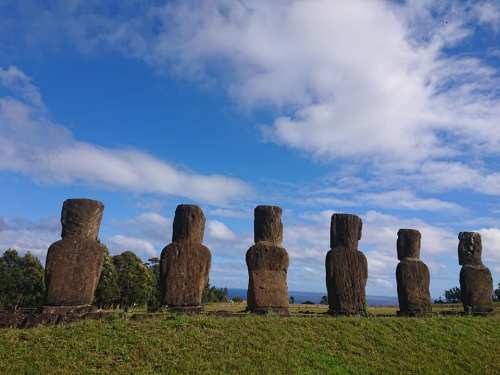
Popular myth tells a story of self-sabotage, where the people cut down all the trees and then starved, as they had nothing to build or cook with. However, a recent study refutes this. Scientific analysis such as carbon dating showed that the islanders ate a diet rich in fish and that they knew how to sustainably manage their environment, even though the soil was poor. The study’s authors suggest that it was the island’s visitors who were to blame for the lack of trees, as rats could have wiped out the remaining slow-growing palm trees. They had to import them from Tahiti in the 1960s.
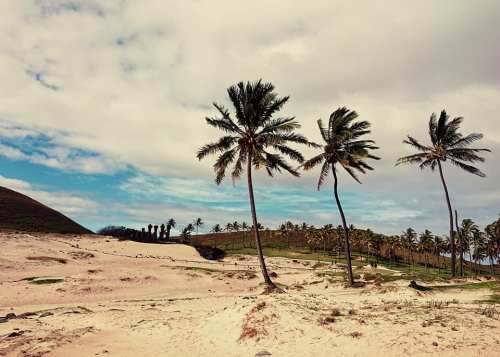
As the islanders could no longer transport their impressive monoliths, they started a new “Bird Man” cult. There is a cave on the island that is faintly painted with bands of colour, honouring their new belief system. They would have competitions to get bird eggs, often laid in precarious places on the cliffs. This shows that they were using initiative to survive.

Legend has it that deforestation led to starvation and even resorted to cannibalism in the late 1700s. This myth has also been debunked with evidence that the population used innovative techniques to ensure that they could continue growing crops in the dryer soil.
In 1862 outsiders once again brought death and despair. A ship from Peru took half the island there as slaves, some 1 500 men. Disease was rife, and eventually 100 were allowed to return, after pressure from the English and French. However, smallpox spread during the return voyage, and the 15 survivors spread this disease to the remaining islanders, most of whom died.
Those who survived were then forced to give up their indigenous beliefs and convert to Catholicism, which was completed in 1866. In 1870, a French explorer arrived, Dutroux Bornier. He was detested by the inhabitants and most left with a missionary for a nearby island, Mangareva. It was only after he was killed that some returned.
After these waves of foreign interference, just over 100 of the original islanders remained in 1877.
In 1888 the Rapa Nui King was given a deed to sign, giving the Chilean government control of the island. The document was translated for the indigenous people to mean “protection” and “friendship”. Sensing deceit, the King Atamu Tekena bent to the ground and took a handful of dirt in one hand and a handful of grass in the other. He gave the Chilean representative grass and kept the dirt. The land would always belong to his people.
Almost 80 years passed before the Chilean government recognised the indigenous population as Chilean citizens, following a rebellion. In 2014 they submitted a petition for independence which they continue to pursue. Tensions between Chileans and Polynesians was evident in an eco hotel development on the coast, which had graffiti on its fence and black flags obstructing the view.

Polynesian descendants look after the moai statue sites, ensuring that their spiritual past is respected. They now have a flag which was first flown in 2006, a red “Reimiro” ornament that was worn by chiefs and others of high status.
Now the population is back to its original size of around 7,000, almost all concentrated in the small settlement of Hanga Roa.
Sadly, locals appear to be making the myth of self-sabotage a reality. It takes three hours to walk to the other side of the island, yet everyone goes everywhere in battered Nissan pick ups and Jeeps. With these excessive and unnecessary emissions, they are contributing to climate change which could eventually submerge the whole island. It has already resulted in coastal erosion which threatens the existence of the mighty Moai statues.
To this day, outsiders continue to damage the island. Seas of selfie-sticks, star jumps and shouting ruin the quiet reflective impact of the moai and some even risk damaging them in their vain pursuit of the “perfect” picture.
Hundreds of years ago, Easter Island needed protection from visitors bringing death and disease, leading to the creation of the only set of Moai to face the sea.
Now the island is under threat once more.

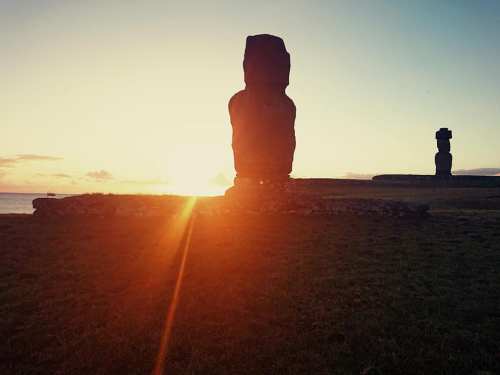

You must be logged in to post a comment.